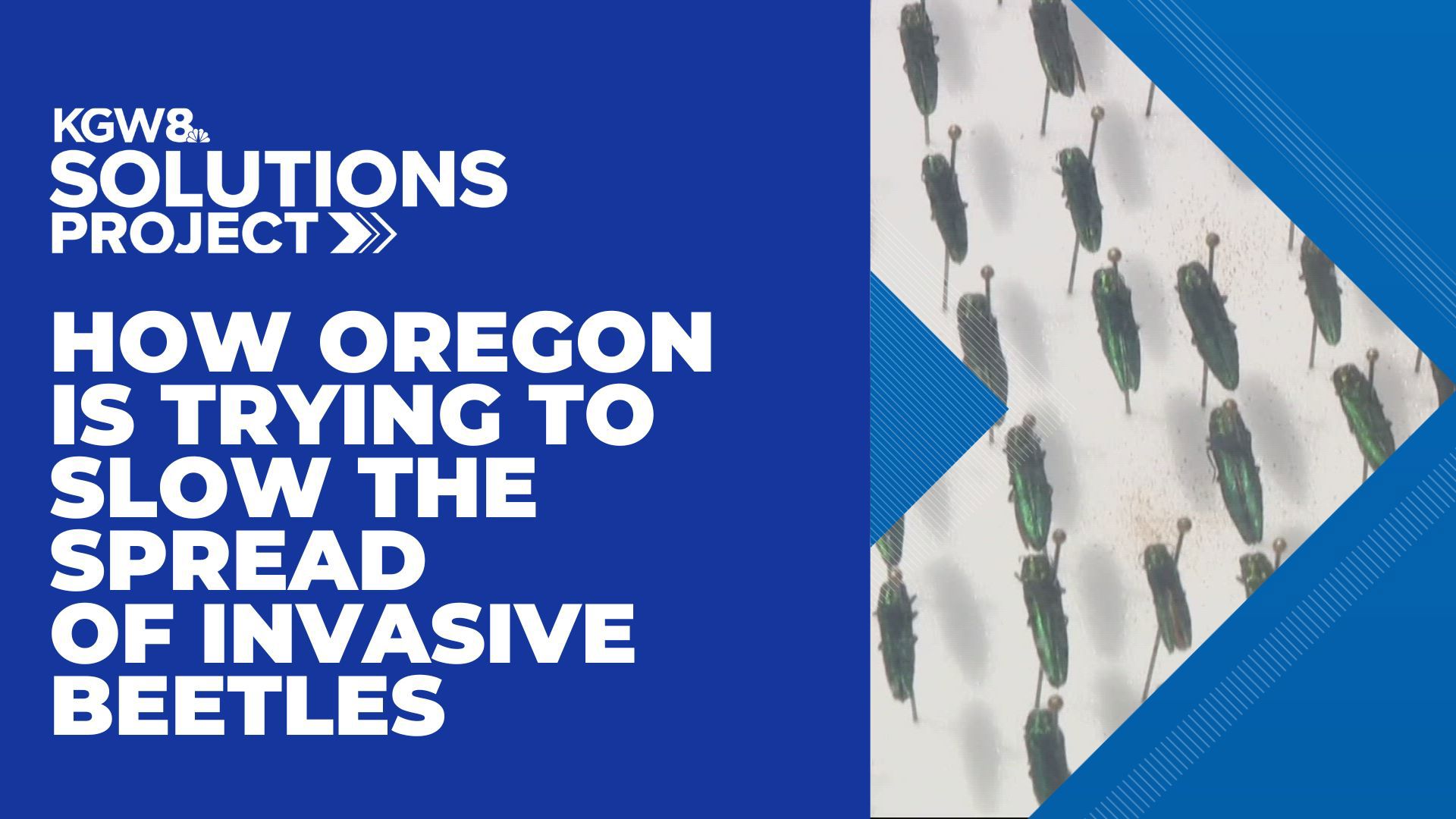FOREST GROVE, Ore. — A beetle species described as the most destructive forest pest in the country are killing ash trees in Washington County. Now, both cities of Forest Grove and Cornelius are trying to slow the spread of the invasive emerald ash borer.
Dr. Max Ragozzino is an entomologist, a person who studies insects, with the Oregon Department of Agriculture. He said the beetle was first detected in Forest Grove back in June of 2022, since then they've killed at least 200 ash trees locally.
"Today, we are working on removing some infested emerald ash borer trees," said Dr. Ragozzino. "We are working as part of the Slow Ash Mortality Strategy program in order to slow the spread of emerald ash borer out from Forest Grove."
On Wednesday, several local, state and federal agencies were in Washington County taking part in their two-pronged approach to cutting down infected trees and inspecting untouched ones in Cornelius. The groups also chipped the trees they cut down to destroy the larvae.
"The adult beetles feed on some of the foliage and then they land on the bark of the tree, lay an egg, and then, this is what the damaging live stage begins," said Dr. Ragozzino. "The larva of the beetle feeds underneath the bark, and in doing so, it girdles the tree."
So, how do you determine if a tree is infected? Well, there are several signs: They include canopy decline, dying branches, bark split down the length of the tree and a "D" shaped exit hole that's three millimeters across the tree.
A group with the Oregon Department of Forestry also helped inspect several trees in Cornelius on Wednesday. They did so by checking the tree canopy, the bark for exit holes and measuring the tree's diameter for age. Once the tree is ready, the group will inject pesticides directly into the tree to protect it from emerald ash borer.
"What we saw over there in Forest Grove is the worst-case scenario," said Community Assistant Forester with the Urban Community Forestry Program at Oregon Department of Forestry, Alison Herrell. "But the good news is that we have an opportunity to make much better-managing decisions."
Herrell said her team will return in a few weeks to reassess the trees as they're not yet ready to be treated in hopes of saving every single one.
"I would personally recommend that almost all if not every single one of these trees, be treated to prevent an emerald ash borer infestation," said Lilah Gonen, a community assistant forester with the Urban Community Forestry program at the Oregon Department of Forestry.
The KGW Solutions Project is our commitment to report on ideas and strategies that address important issues in our community. We want to hear from you about solutions. Contact us at solutions@kgw.com.

